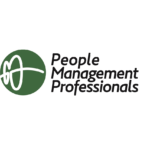Summary of Childcare Leave Law revision

It is often said that Japan’s Childcare Leave Law is complicated and difficult to understand. The revised Childcare Leave Law will come into effect sequentially in April and October 2022, making Japan’s Childcare Leave Law even more complicated.
Nevertheless, it is the law, and Companies must comply. The following is a brief overview of the amendments to the law.
In particular with regards to the revised law that will come into effect on October 1, Companies must revise their childcare leave regulations in accordance with the revisions and submit the revised document to the Labor Standards Bureau in their jurisdiction.
PMP can be assist in revising the childcare leave regulations and submit to the Labor Standards Bureau.
The changes that are effective from April 1, 2022.
1 Creating an employment environment conducive to taking childcare leave
In order to facilitate the offer of childcare leave and paternity leave for fathers, employers must take at least one of the following measures.
* It is desirable to take multiple measures.
(i) Provide training on childcare leave and paternity leave
(ii) Establish a consultation system for childcare leave and paternity leave (establishment of a consultation counter)
(iii) Collect and provide examples of cases of childcare leave and paternity leave taken by employees in the Company
(iv) Informing the Company’s employees about the childcare leave and paternity leave systems and the policy for promoting the use of childcare leave.
2 Individual measures to inform and confirm the intention of employees who have reported their pregnancy and impending childbirth (either for themselves or their spouses)
For those employees who have reported their own or their spouse’s pregnancy or childbirth, the employer shall provide the following information concerning the childcare leave system.
The Company must inform the employees and confirm their intention to take leave on a case-by-case basis.
Individual notification and confirmation of intention to take leave in a manner that discourages employees from taking leave is not acceptable.
Items to be informed
(i) Systems related to childcare leave and paternity leave
(ii) Where to request childcare leave and paternity leave
(iii) Matters related to childcare leave benefits
(iv) Treatment of social insurance premiums to be borne by the employee for the period of childcare leave and paternity leave
Methods of individual notification and confirmation of intent
(i) In person (ii) In writing (iii) By fax (iv) By e-mail
Note: Online interviews are also possible, for (i) (iii) and (iv) are available only if the employee requests.
* Employment environment improvement, individual notification and confirmation of intent are both covered from October 1, 2022 for paternity leave.
3 Relaxation of requirements for fixed-term workers to take childcare/nursing care leave and the revision of employment regulations.
The current provisions for utilizing childcare leave are as follows:
(i) Continuous employment for at least one year
(ii) It is not clear that the contract will expire before the child becomes 1 year and 6 months of age.
After the revision, effective April 1 the requirement of (i) will be eliminated and only (ii) will remain.
In addition, workers who have been continuously employed for less than one year as well as indefinite-term workers will be exempted from the requirement from April 1 upon conclusion of a labor-management agreement., Hence a new labor-management agreement from April 1 will be required.
The changes that are effective from October 1, 2022
4 Establishment of Paternity Leave within the Childcare Leave Law (Childcare Leave at Birth)
(i) Male employees may take up to 4 weeks of new childcare leave within 8 weeks of the birth of their child. This leave is called “Paternity Leave.
(ii) In principle, the deadline for notification is two weeks prior to the leave, but in principle it can be up to one month in advance, provided a labor-management agreement has been concluded.
(iii) When a labor-management agreement has been concluded, it is possible to work during paternity leave to the extent agreed upon by the employee. However, the maximum duration of this work is 2 weeks, so up to half of the paternity leave period.
(iv) The specific procedures are as follows:
1) If an employee is allowed to work, he must offer his conditions to the employer
2) The employer in turn presents possible days and hours within the conditions proposed by the employee (if there are no possible days, then the employer must so inform the employee).
3) The Employee agrees
4) The Employer gives notice
5) There is a limit to the number of days and hours an employee can work.
◦ Half of the scheduled working days and scheduled working hours during the period of leave
◦ If the day on which the leave is scheduled to start or end is a working day, less than the number of scheduled working hours on that day.
5 Childcare leave can be now be split.
(i) For extensions after the child’s first birthday, the start date of childcare leave can be made more flexible.
(ii) After the said child is more than one year, reapplication will now be possible under special circumstances.
The changes that are effective from April 1,2023.
6 There will be an obligation to publicize the status of childcare leave taken.
Companies with more than 1,000 employees will be required to annually publicly announce the status of their use of childcare leave and other leaves related to childcare.
The information to be published will include “the rate of taking childcare leave, .” or “the rate of taking childcare leave and other leaves related to childcare” for male Employees.
The period for calculating the rate is the fiscal year immediately preceding the year in which the announcement is made. The announcement must be made public announcements and hence the Internet or other methods that are accessible to the general public are necessary annually.
In addition to your company’s website, we also recommend that you publicize the information on the “Hiroba for Supporting Work-life Balance” website operated by the Ministry of Health, Labour and Welfare.
This is a summary of the revised law.
If you have any questions or comments, please contact PMP directly.












